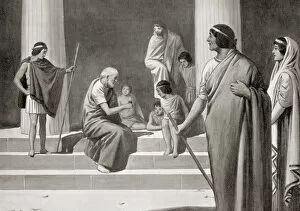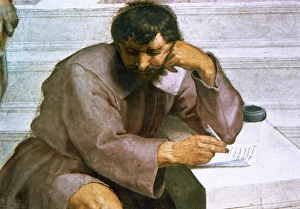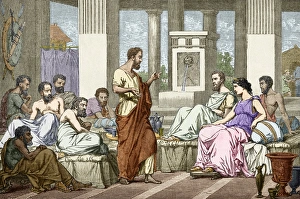Pre Socratic Collection
The Pre-Socratic philosophers were a group of thinkers who lived in ancient Greece before the time of Socrates
All Professionally Made to Order for Quick Shipping
The Pre-Socratic philosophers were a group of thinkers who lived in ancient Greece before the time of Socrates. They laid the foundation for Western philosophy and made significant contributions to various fields such as science, mathematics, and metaphysics. This caption explores some iconic artworks depicting these influential figures. Anaximander (610-546 BC) is portrayed in a Roman mosaic holding a sundial, symbolizing his interest in astronomy and cosmology. His theories about the origin of the universe influenced later philosophers. Heraclitus, depicted by Michelangelo in the School of Athens fresco, represents his enigmatic nature as "The Obscure" or "The Weeping Philosopher. " Heraclitus believed that change was fundamental to existence and famously stated that "everything flows. " Thales of Miletus (c. 625-547 BC), illustrated from an ancient artwork by Jacob de Gheyn, was known for his mathematical discoveries and philosophical ideas about water being the primary substance from which all things arise. Another painting shows Heraclitus engaging with Democritus through a game of dice. This scene highlights Heraclitus' disdain for conventional wisdom while emphasizing Democritus' atomic theory proposing that matter consists of indivisible particles called atoms. In another artwork featuring Hippocrates alongside Democritus, their collaboration signifies their shared interest in medicine and natural sciences during this period. A portrait captures Heraclitus alone; he appears contemplative and deep in thought—a representation fitting for someone known as one of history's most profound thinkers. Anaximenes (c. 610-547 BC), another Pre-Socratic philosopher, is not directly depicted here but should be acknowledged for his belief that air is the fundamental element underlying all existence. These artworks provide glimpses into the lives and philosophies of these remarkable individuals who paved the way for future philosophical inquiry. Their ideas continue to shape our understanding of reality and inspire generations of thinkers.














